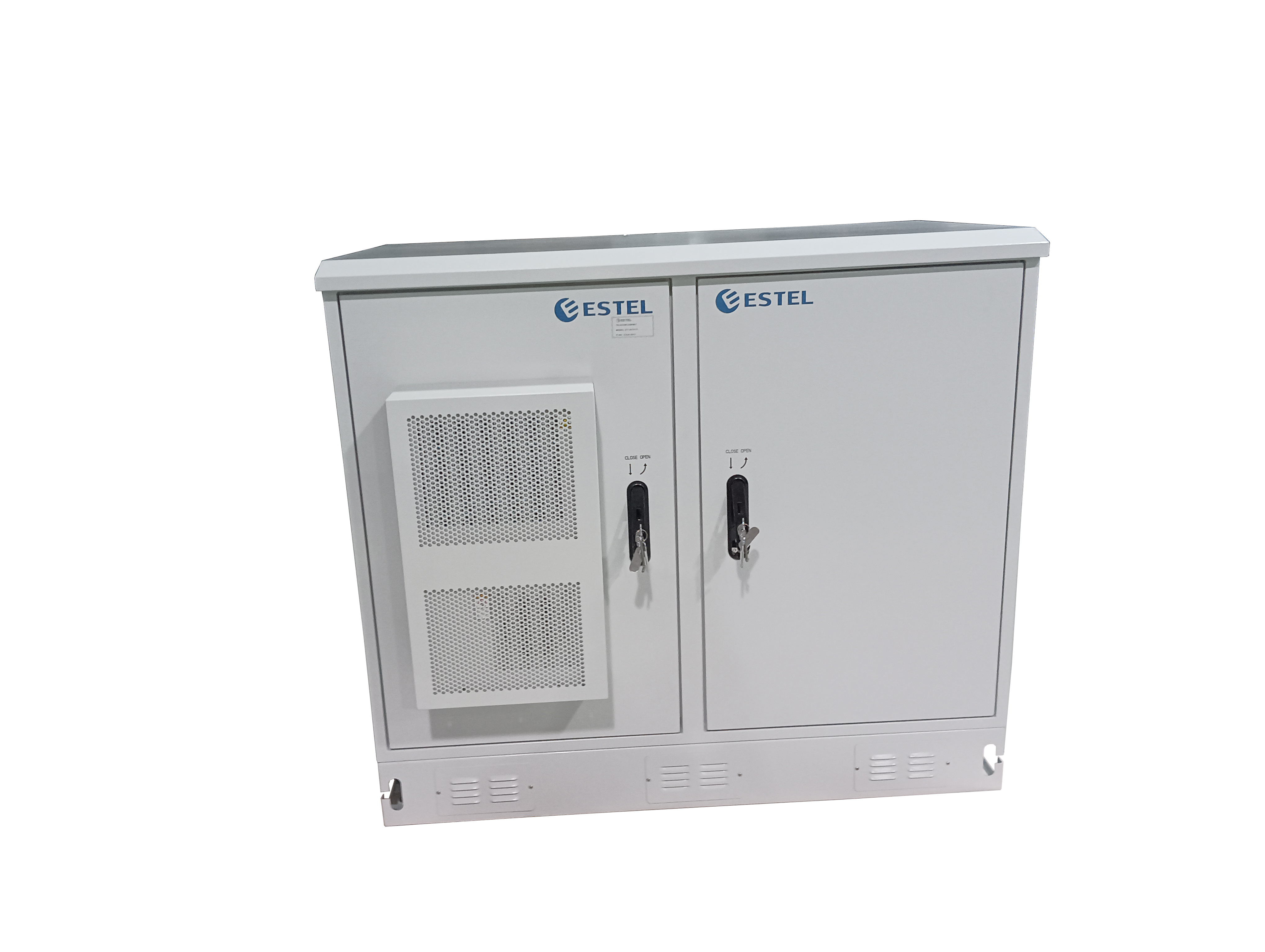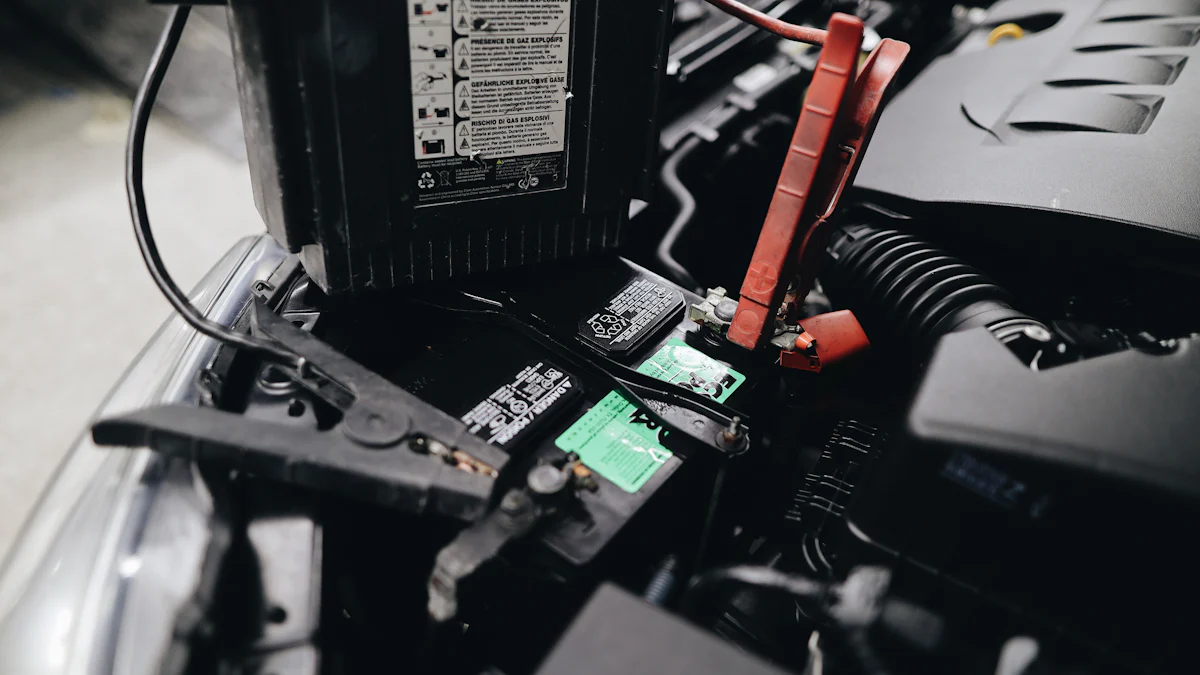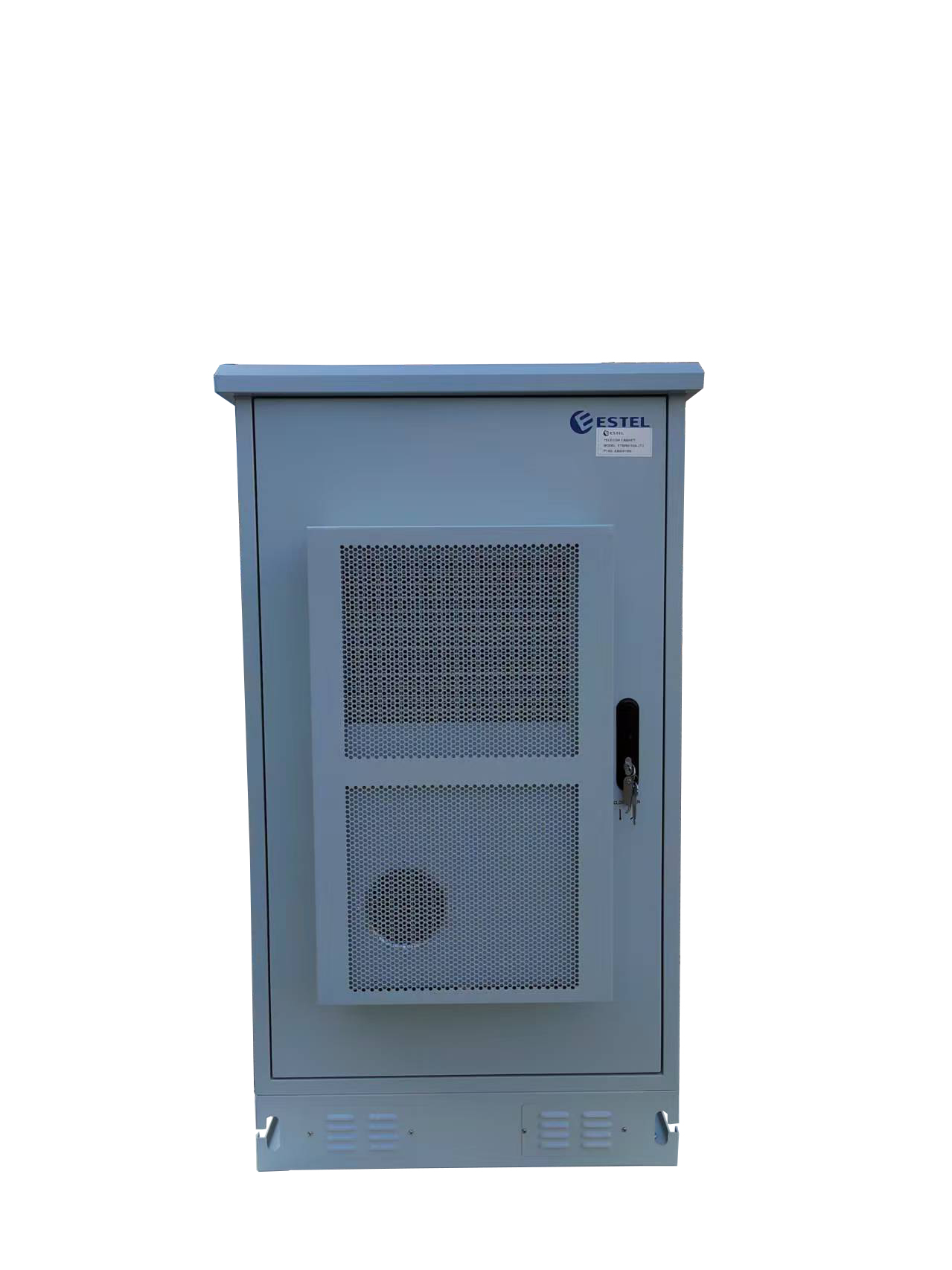Understanding the Advantag es and Disadvantages of Lead-Acid Batteries

Lead-acid batteries play a crucial role in powering various industries and applications. You’ll find them in vehicles like cars, trucks, and motorcycles, where they serve as starter batteries. They also support critical systems in hospitals and telecommunications as standby power sources. Industries such as oil and gas, mining, and manufacturing rely on these batteries for backup power. Their affordability and reliability make them a popular choice, but their weight and limited lifespan pose challenges. Understanding 铅酸电池的优势和劣势 helps you make informed decisions about their use in transportation, telecom, and renewable energy systems.
Key Takeaways
Lead-acid batteries are cheap and often used in cars and backup systems. They are a good choice for many uses.
These batteries are great at giving strong power quickly. This is important for places needing fast energy during emergencies.
Flooded lead-acid batteries need regular care to avoid problems like sulfation and to last longer.
Over 97% of lead-acid batteries are recycled, which helps the environment.
Lead-acid batteries are heavier and bigger than newer ones, making them harder to move.
What Are Lead-Acid Batteries?

Overview of Lead-Acid Battery Technology
Lead-acid batteries are one of the oldest rechargeable battery technologies still in use today. You’ll find them in applications ranging from vehicles to backup power systems. These batteries store energy through a chemical reaction between lead, lead dioxide, and sulfuric acid. During discharge, this reaction generates electricity, which powers connected devices. Their simple design and proven reliability make them a popular choice for many industries.
The basic chemical process that powers these batteries involves reactions at both the positive and negative plates:
At the Positive Plate (Lead Dioxide):
PbO2 + H2SO4 + 2H⁺ + 2e⁻ → PbSO4 + 2H2OAt the Negative Plate (Spongy Lead):
Pb + H2SO4 → PbSO4 + 2H⁺ + 2e⁻Net Reaction during Discharge:
PbO2 + Pb + 2H2SO4 → 2PbSO4 + 2H2O
This reversible process allows the battery to recharge and discharge multiple times.
Key Components and How They Work
Each lead-acid battery contains several key components that work together to store and deliver energy. Here’s a breakdown of these components and their functions:
Component | Function |
|---|---|
Lead (Pb) | Used in both positive and negative electrodes, providing conductivity and structure. |
Lead Dioxide (PbO2) | Active material in positive plates during discharging, facilitating energy conversion. |
Sulfuric Acid (H2SO4) | Acts as the electrolyte, enhancing ion flow between electrodes. |
Plastic Casing | Provides insulation, protection, and structural stability to the battery. |
These components ensure the battery operates efficiently and safely.
Types of Lead-Acid Batteries
Flooded Lead-Acid Batteries
Flooded lead-acid batteries are the most traditional type. They require regular maintenance, such as adding water to prevent the electrolyte from drying out. These batteries vent gases during operation, so they must be installed upright. While they are cost-effective, they are prone to acid stratification, which can reduce performance over time.
Sealed Lead-Acid Batteries (AGM and Gel)
Sealed lead-acid batteries, including Absorbent Glass Mat (AGM) and Gel types, offer maintenance-free operation. AGM batteries have low internal resistance, enabling faster charging and better performance. They are spill-proof and can be installed in various orientations. Gel batteries, on the other hand, use a jelly-like electrolyte. While they are durable, they are sensitive to high amperage, which limits their use in certain applications.
Each type has unique features, making it suitable for specific needs and environments.
铅酸电池的优势和劣势: Advantages of Lead-Acid Batteries
Affordability
Low Initial Cost Compared to Other Battery Types
Lead-acid batteries are one of the most affordable rechargeable battery options available today. Their low initial cost makes them an attractive choice for applications where budget constraints are a concern. When compared to lithium-ion batteries, lead-acid batteries have a significantly lower upfront cost. For example, the total cost of a lead-acid AGM battery is €78,000, while a lithium-ion battery costs only €23,000. However, the cost per usable kWh for lead-acid batteries is €0.42, which is higher than lithium-ion’s €0.15. Despite this, their affordability remains a key advantage for large-scale projects.
Cost-Effectiveness for Large-Scale Applications
For large-scale applications, such as backup power systems or renewable energy storage, lead-acid batteries provide a cost-effective solution. Their ability to deliver reliable performance at a lower price point makes them ideal for industries like telecommunications and emergency power systems. This affordability ensures that you can deploy them in bulk without exceeding your budget.
Power Output and Performance
High Surge Current Capability
Lead-acid batteries excel in delivering high surge currents, which is essential for applications requiring a sudden burst of power. Industries like telecommunications and emergency power systems benefit greatly from this feature. For instance, these batteries provide backup power for cell sites and high-availability systems in hospitals. Their ability to handle high surge currents ensures uninterrupted operation during critical moments.
Reliable Performance in Various Conditions
You can rely on lead-acid batteries to perform consistently across a wide range of conditions. Their specific power output of 180 W/kg and energy density of 80-90 Wh/L make them suitable for demanding environments. While they may not match the higher performance of lithium-ion batteries, their proven reliability ensures dependable operation in diverse applications.
Reliability and Proven Technology
Decades of Use in Multiple Industries
Lead-acid batteries have a long history of reliability. Invented in 1859 by Gaston Planté, they were the first rechargeable batteries used commercially. Over the years, advancements like sealed or maintenance-free designs in the 1970s have improved their safety and usability. These innovations have made them a trusted choice across industries, from automotive to telecommunications.
Easy Availability and Established Supply Chain
The widespread use of lead-acid batteries has resulted in an established supply chain. You can easily find these batteries in the market, ensuring quick replacements and minimal downtime. Their availability, combined with decades of proven performance, makes them a dependable option for various applications.
铅酸电池的优势和劣势: Disadvantages of Lead-Acid Batteries
Weight and Size
Heavier Compared to Modern Alternatives
Lead-acid batteries are significantly heavier than modern alternatives like lithium-ion batteries. For example:
A typical 8D-sized lead-acid battery weighs 167 lbs and measures 20.5" x 10.5" x 9.5".
In comparison, a lithium polymer battery with the same 100Ah capacity weighs only 8.2 kilograms, while a lead-acid battery of similar capacity weighs 34.3 kilograms.
This weight difference makes lead-acid batteries less practical for portable applications. You may find them cumbersome to transport or install, especially in systems requiring frequent mobility.
Bulky Design Limits Portability
The bulky design of lead-acid batteries further limits their portability. Their large size reduces flexibility in applications where space is a constraint. For instance, a Trojan 8D-AGM battery provides 230 amp-hours of total capacity, but only 115 amp-hours are usable for standard applications. This inefficiency, combined with their size, makes them less suitable for compact or lightweight systems.
Limited Lifespan
Shorter Cycle Life Compared to Lithium-Ion Batteries
Lead-acid batteries have a shorter lifespan compared to lithium-ion batteries. A deep-cycle lead-acid battery typically delivers between 100 to 200 cycles before its performance starts to decline. Replacement becomes necessary when the battery’s capacity drops to 70 or 80 percent. This limited cycle life can increase long-term costs, especially in applications requiring frequent charging and discharging.
Degradation Over Time with Frequent Use
Frequent use accelerates the degradation of lead-acid batteries. Factors like improper charging, extreme temperatures, and physical damage can reduce their lifespan. Acid stratification, a common issue in flooded batteries, occurs when the battery is not fully recharged. This problem worsens in cold weather or with short trips, as the battery doesn’t get enough time to recharge fully. Additionally, sulfation—a buildup of lead sulfate crystals—can occur if the battery is not sufficiently charged after each use, further reducing its capacity.
Maintenance Requirements
Need for Regular Watering in Flooded Batteries
Flooded lead-acid batteries require regular maintenance to function effectively. You need to add water periodically to prevent the electrolyte from drying out. Without this upkeep, the battery’s performance can decline rapidly. Operating at moderate temperatures and avoiding deep discharges can also help extend its lifespan.
Risk of Sulfation if Not Properly Maintained
Sulfation poses a significant risk to lead-acid batteries. This condition occurs when the battery is deprived of a full charge, leading to the formation of lead sulfate crystals on the plates. To prevent sulfation, you should fully recharge the battery after each discharge cycle. Proper charging practices, such as applying a fully saturated charge every few weeks, can minimize this risk. Additionally, avoiding storage in high temperatures above 75°F can help prevent sulfation and prolong the battery’s life.
Environmental Impact and Sustainability
Recycling and Reusability
High Recycling Rate of Lead-Acid Batteries
Lead-acid batteries stand out for their exceptional recycling rate. Over 97% of these batteries are recycled globally, making them one of the most recycled products. This rate surpasses other commonly recycled items, such as:
Aluminum cans, which have a recycling rate of 55%.
Newspapers, with a recycling rate of 45%.
Glass bottles and tires, both at 26%.
When you purchase a new lead-acid battery, it typically contains 60 to 80% recycled materials. This high recycling rate highlights the efficiency of the lead-acid battery lifecycle and its contribution to reducing waste.
Importance of Proper Recycling Practices
Recycling lead-acid batteries offers significant environmental benefits. It prevents toxic chemicals from contaminating soil and water, reducing the waste that ends up in landfills. By reusing metals and minerals, recycling conserves natural resources and decreases the need for mining. This process also lowers greenhouse gas emissions, helping mitigate climate change. Additionally, recovering valuable materials through recycling protects wildlife and human health by minimizing pollution. Proper recycling practices ensure these benefits are maximized while reducing the risks associated with improper disposal.
Toxicity and Environmental Concerns
Lead and Acid Spillage Risks
Improper disposal of lead-acid batteries poses serious environmental risks. Toxic lead exposure can harm human health, causing brain and kidney damage, hearing impairment, and learning difficulties in children. Each year, over 40,000 metric tons of lead from these batteries end up in landfills, where they can leach into the soil and water. The recycling process itself, if not managed properly, can release lead into the environment, further affecting soil and water quality.
Challenges in Safe Disposal
Improper recycling practices can expose workers and nearby communities to high levels of toxic substances. Facilities lacking pollution controls exacerbate these risks, releasing lead particles and fumes into the air. These emissions harm both the environment and human health, especially in densely populated areas. To address these challenges, you should always dispose of lead-acid batteries through certified recycling programs. This ensures safe handling and minimizes the environmental impact of these batteries.
Practical Applications of Lead-Acid Batteries

Automotive Industry
Use in Starting, Lighting, and Ignition (SLI) Systems
Lead-acid batteries play a vital role in vehicles by powering starting, lighting, and ignition (SLI) systems. These batteries supply the energy needed to start engines, stabilize voltage, and protect electrical systems from damage caused by voltage spikes. Since the introduction of the starter motor in 1912, lead-acid batteries have remained the preferred choice for automotive applications due to their durability and affordability. Globally, most lead-acid batteries are used in SLI systems, with millions of units shipped annually. Starter batteries, designed for quick energy bursts, are widely used in motorcycles and internal combustion engine vehicles. Their thin lead plates optimize current flow, ensuring reliable performance in these applications.
Role in Electric and Hybrid Vehicles
In electric and hybrid vehicles, lead-acid batteries serve as a cost-effective solution for budget-conscious applications. They are commonly used in light electric vehicles (LEVs) like scooters and e-bikes, where their weight and affordability are advantageous. However, their lower energy density and shorter lifespan limit their use in advanced electric vehicles. Despite these limitations, they remain a practical choice for specific applications requiring low-cost energy storage.
Backup Power Systems
Applications in Uninterruptible Power Supplies (UPS)
Lead-acid batteries are a reliable choice for uninterruptible power supplies (UPS). Their affordability and proven performance make them ideal for critical systems requiring backup power. These batteries retain charge for extended periods due to their low self-discharge rate, ensuring readiness during power outages. They also deliver high power output, making them suitable for applications that demand sudden energy surges. Known for their robustness, lead-acid batteries perform consistently even in extreme temperatures and harsh environments, providing dependable backup power for hospitals, data centers, and other essential facilities.
Use in Emergency Lighting and Telecommunications
Emergency lighting systems and telecommunications infrastructure rely heavily on lead-acid batteries. These batteries supply power to critical systems during outages, ensuring safety and uninterrupted communication. Hospitals use them to maintain operations during emergencies, while telecommunications systems depend on their reliability to keep networks running. Their ability to deliver consistent performance under challenging conditions makes them a trusted choice for these applications.
Niche Applications
Golf Carts and Small Electric Vehicles
Lead-acid batteries are widely used in golf carts and small electric vehicles. Their affordability helps golf courses manage costs, while their reliability ensures consistent performance throughout the day. These batteries provide sufficient power for operation on hilly terrain and are easy to source from specialized suppliers. Their durability and cost-effectiveness make them a practical option for these niche applications.
Renewable Energy Storage in Off-Grid Systems
Off-grid renewable energy systems often use lead-acid batteries for energy storage. These batteries are favored for their reliability, low cost, and established manufacturing infrastructure. Gel batteries, a type of sealed lead-acid battery, are particularly suitable for off-grid solar energy systems due to their deep cycle capabilities and resistance to vibration. Their ability to handle high-current demands makes them a dependable choice for storing renewable energy in remote locations.
Lead-acid batteries remain a practical choice for many applications due to their affordability, reliability, and high power output. You’ll find them widely available and compatible with various systems, making them a dependable option. However, you should consider key trade-offs like weight, maintenance needs, and environmental concerns.
Advantages:
Low cost and mature technology.
High surge currents and recyclability.
Disadvantages:
Heavy and bulky design.
Shorter lifespan and regular upkeep.
Understanding these factors helps you select the right battery for your needs. Despite newer technologies, lead-acid batteries continue to offer value in specific scenarios.
FAQ
What makes lead-acid batteries affordable compared to other types?
Lead-acid batteries use inexpensive materials like lead and sulfuric acid. Their manufacturing process is well-established, reducing production costs. You’ll find them widely available, which keeps prices competitive. This affordability makes them a popular choice for budget-conscious applications.
How can you extend the lifespan of a lead-acid battery?
You can extend its lifespan by avoiding deep discharges and keeping it fully charged after use. Regular maintenance, like checking electrolyte levels in flooded batteries, also helps. Store it in a cool, dry place to prevent overheating and sulfation.
Are lead-acid batteries environmentally friendly?
Lead-acid batteries have a high recycling rate, making them more sustainable than many alternatives. However, improper disposal can harm the environment. Always recycle them through certified programs to minimize risks and support sustainability efforts.
Why are lead-acid batteries used in backup power systems?
Their reliability and ability to deliver high surge currents make them ideal for backup power. You can count on them to provide consistent performance during outages. Their affordability also makes them a cost-effective solution for critical systems like hospitals and telecom networks.
Can lead-acid batteries be used in extreme weather conditions?
Yes, lead-acid batteries perform well in various conditions. Their robust design ensures reliable operation in both hot and cold climates. However, extreme temperatures can affect their lifespan, so proper insulation or cooling systems may be necessary for prolonged use.
See Also
Essential Insights Into Telecom Power Supply Systems
Key Features of Telecom Power Supply Systems Explained
Comparing Durability of Outdoor Communication Cabinets
CALL US DIRECTLY
86-13752765943
3A-8, SHUIWAN 1979 SQUARE (PHASE II), NO.111, TAIZI ROAD,SHUIWAN COMMUNITY, ZHAOSHANG STREET, NANSHAN DISTRICT, SHENZHEN, GUANGDONG, CHINA

